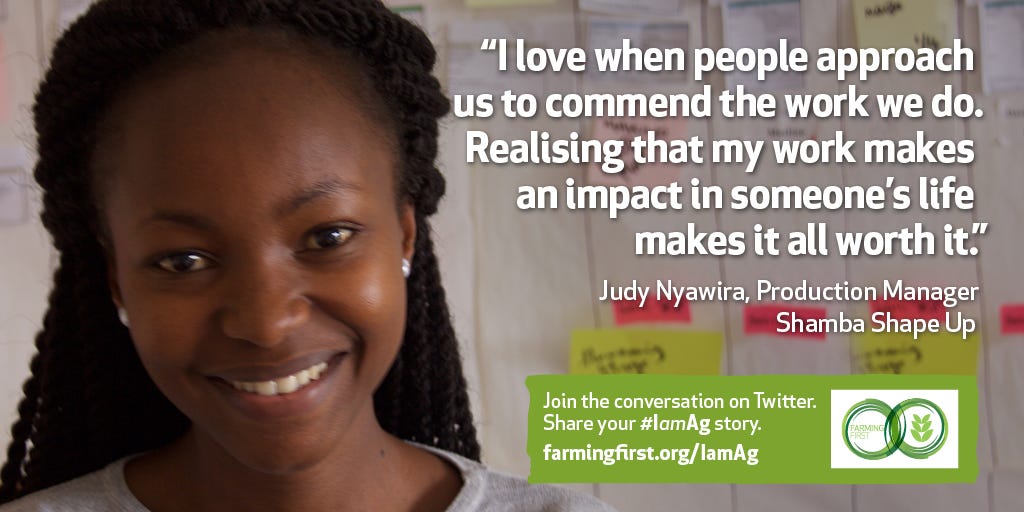By Robert Hunter and Yvonne Harz-Pitre, Co-Chairs of the global sustainable agriculture coalition, Farming First.
A sleeping giant is waking in the form of a new generation of young people that is hungry for change. In the United States, millennials (those aged between 18–30) are now the largest demographic in the country. Their choices and opinions are going to have a huge influence on future trends. And guess what: a large majority of them are already obsessed with food.
Dubbed “Generation Yum” by author Eve Turow, young people in the developed world care much more about the quality, nutritional value and provenance of their food than previous generations. This wave of interest comes at a critical moment. Our food system is facing a colossal challenge, to double production to feed a growing global population, as natural resources dwindle and a changing climate takes its toll.
The agriculture sector has a duty to ensure that this growing interest in food is aligned with the realities and needs of agricultural production. So can the agricultural community encourage this powerful cohort not only to care about food, but to actually shape its future by taking up careers in agriculture?
At Farming First, we think this is not only possible, but essential. The first step is to shake off the stereotype that agriculture is just for aging farmers. Our recent I Am Agriculture campaign showcased dynamic and innovative young people involved in an array jobs that are making our food system fit for the future, to inspire a new wave of professionals to follow in their footsteps.
We told the story of Victor Taleon, a food scientist at HarvestPlus, who is working with scientists to develop more nutritious crops to combat malnutrition in the developing world. We met Rolando Corrales, who works as a financial risk analyst at Root Capital, helping farmers access the credit they need to grow their businesses. We also featured Judy Nyawira, who might just have the coolest job of all — she is a producer on the hit African TV show “Shamba Shape Up”, which helps farmers all over East Africa sustainably grow more food. Our youth bloggers told us how exciting and rewarding their work in agriculture was — and they’ve never dug a single patch of soil.

In the developing world, the opportunity to involve young people across the value chain is just as great. Studies show that while the population will continue to swell between now and 2030, the majority of this population growth will be in the developing world.

In sub-Saharan Africa alone, there is an estimated youth population of around 200 million — all need of stable employment. By enabling young people to take on jobs in the food industry, we can solve the dual challenge of youth unemployment and food insecurity.
So how do we make this happen? We spoke to a range of experts to ask how they got into their agricultural careers, and how they think the youth should be inspired to join the ranks.
Many told us that another key step is to communicate to young people that agriculture presents a lucrative business opportunity. “70% of Africans are farmers,” Kinyua M’Mijjewe, Head of Corporate Affairs AME at Syngenta told us during our campaign. “All of them want to become better farmers, all of them need services, so there is huge opportunity to serve them.”
https://medium.com/media/4f64304ef9ea2e158db5ae4b68c1c52c/href
Others mentioned the need to tap into the youth’s passion for technology. In an opinion piece for the Daily Telegraph, Farming First supporter Sir Gordon Conway wrote that a career in agriculture could involve working with high-resolution satellite imagery. This enables farmers across the world to better understand the health of their crops, allowing them to take steps to increase productivity or overall yield, like UK based company Digital Globe. Or it could involve developing state-of-the-art weather and climate-modelling technology to measure the risk exposure that retailers, buyers, banks and farmers will face in the future, like the Imperial College based initiative WINnERS.
The opportunities in agriculture have never been greater, or more diverse. Our future food system is in the hands of the young — let us ensure they are empowered and equipped to make it fit for purpose for the next generation.
This article first appeared on the Chicago Council’s “Global Food for Thought” blog. For more news and views from the Farming First coalition, visit: www.farmingfirst.org.
Can we turn “Generation Yum” into “Generation Ag”? was originally published in Age of Awareness on Medium, where people are continuing the conversation by highlighting and responding to this story.



